Making tools for life in Sakahogi
Knife manufacturing in and around Seki can be divided into several categories,
with many factories specializing in the processing for the knife making process,
such as press-cutting, heat treatment, automatic polishing, handle buffing,
plastic molding, wood handle manufacturing, welding, box manufacturing, and engraving.
To manufacture our knives, we hire specialized factories,
each with their own expertise and who work hard to make better products,
to make them into finished products.
Our main work includes final edging, handle buffing, surface grinding, the light work required between processes,
maintenance, boxing, packing, shipping, and administrative work.
1.Sharpening
2.Surface finish
3.Wrapping the blade before buffing the handle
4.Filling in the gaps in the base
5.Handle buffing
6.Edging
7.Maintenance/finishing
1.Sharpening
After auto-grinding (grinding to make the knife thinner from the back to the blade), a section of the press-out remains on the back of the knife, making it uneven.
We remove this, grind down the corners, and make it smooth with paper.
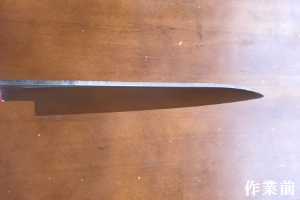
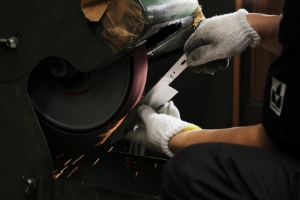
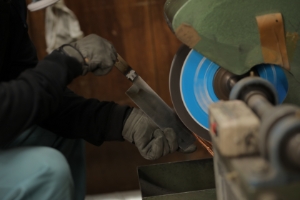
2.Surface finish
口After welding the base, there are often scratches on the blade.
We polish the base, and remove the scratches from the blade with paper.
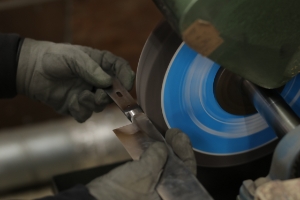
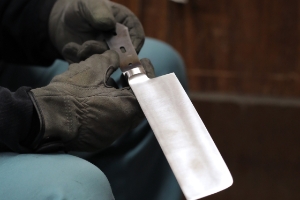
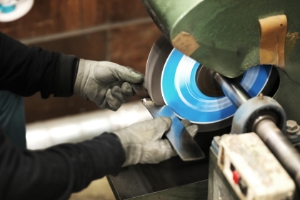
3.Wrapping the blade before buffing the handle
When buffing the handle, we hold the blade and perform 6 to 8 things, including riveting, rough cutting, medium cutting, and buffing the handle. The blade is wrapped in newspaper to prevent scratches.
(We call the newspapers used here "kurukuru".)
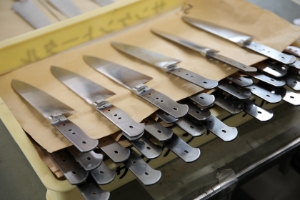
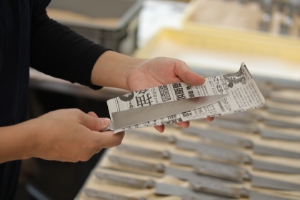
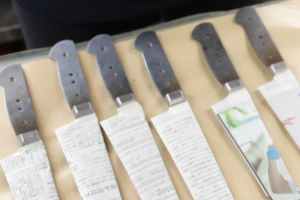
4.Filling in the gaps in the base
After welding the base, some gets get left over due to a loss of heat in those areas.
To prevent water buildup and rust, we fill the gaps with hot melt adhesives.
(Products used are in compliance with the Food Sanitation Act Paragraph 370)
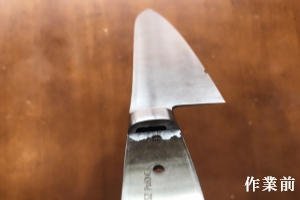
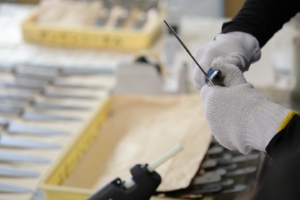
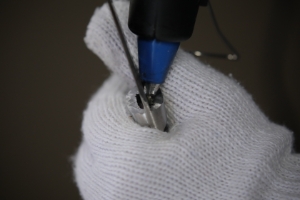
5.Handle buffing
We usually hire a handle buffing specialist.
However, the metallic part of the handle often sticks out after buffing due to the wood shrinking.
This happens a lot to the items made during the rainy season. We therefore grind this part down and re-buff it.
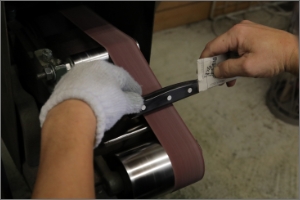
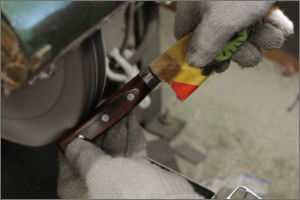
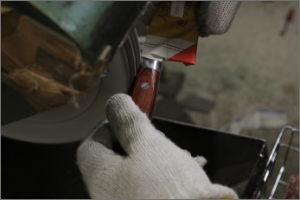
6.Edging
There are three types of plane water grinder, each with a different level of finish.
We use a different type, depending on the product we are making.
We used a water grinder (No. 800) to edge it into a shellfish pattern, and then a No. 3000 square grindstone is used to finish the blade.
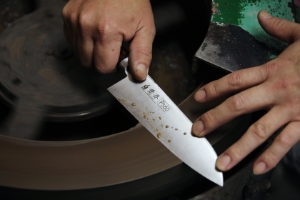
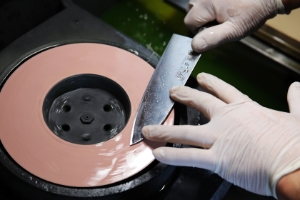
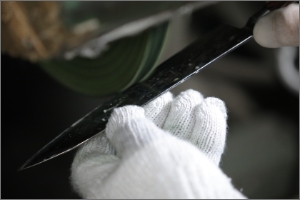
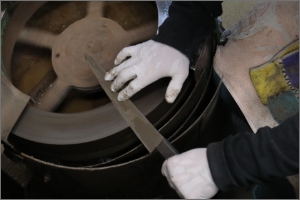
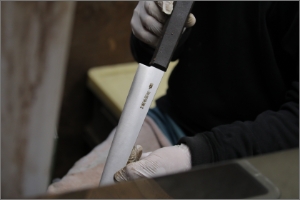
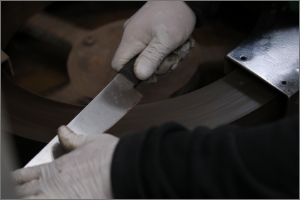
7.Maintenance/finishing
Knives with the blades attached get dirty.
If it is made of stainless steel, we wash it in hot water with a neutral detergent, apply a thin layer of oil, and wrap it in rust proof paper.
If it is made of steel, we remove the dirt by washing with oil, apply oil, and wrap with rust proof paper.
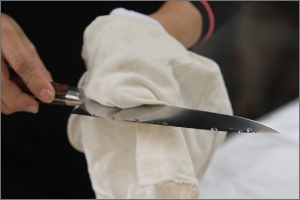
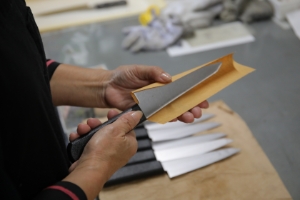
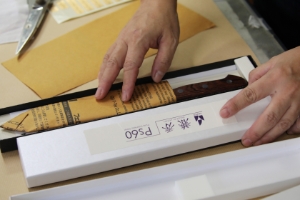

We place great importance on two processes in the making of Kanehide blades: the clam pattern on the blade,
which becomes thinner and thinner toward the edge, and the sub-zero treatment,
which involves cooling the blade to below -73 degrees Celsius after quenching.
It takes a little time, but these two steps improve their cut and their durability.
Making knives requires a high level of concentration, as even the slightest of warping affects the ability of the knife to cut.
Kanehide blades are all made by artisans, adjusted by hand with a close attention to detail, and are filled with passion.

